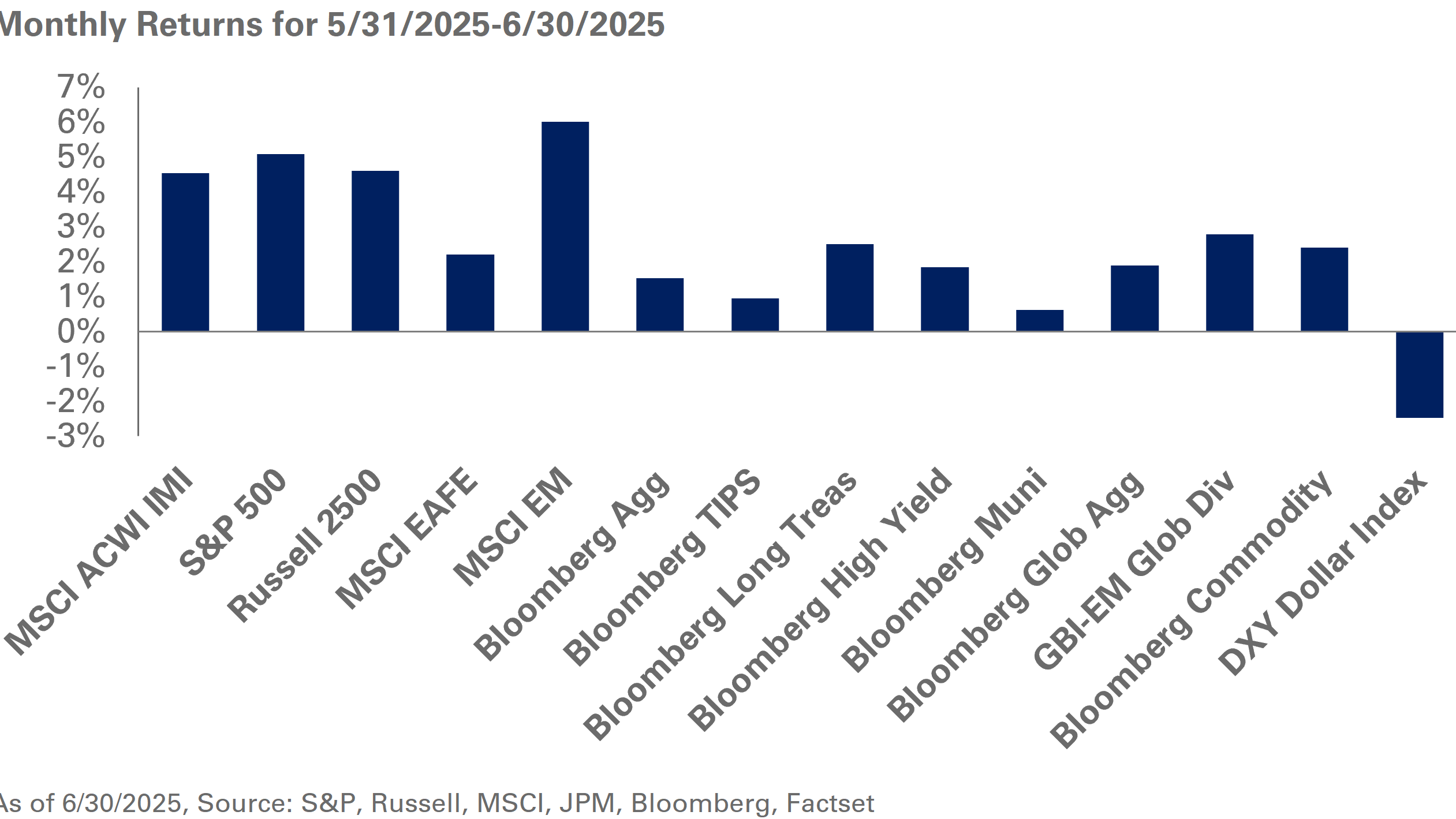NEPC Market Outlook highlights our investment views and recommendations, while examining the key influences driving capital markets.
One of the most challenging decisions as an allocator is to determine when to reduce exposure to assets that have generated outsized gains, especially during periods of extended market strength.
Adding another layer of complexity to this process is the unprecedented and extraordinary levels of fiscal and monetary support—underscoring NEPC’s key market theme of permanent interventions—that continue to bolster assets, driving prices to new highs. These policy interventions have driven yields on Treasury Inflation-Protected Securities and high-yield corporate debt—a staple in many investment portfolios—to record lows. Real yields on five-year TIPS are near rock bottom, briefly flirting with yields of negative 2%. Meanwhile, yields on CCC-rated debt—which occupy the lowest rung of the credit ratings ladder—are currently lower than the lows seen in 2006 and 2007 for the broad high-yield bond market. During periods of market excess, we must ask ourselves this question: has an asset class generated outsized gains relative to our expectations? The answer for TIPS and high-yield bonds: a resounding yes.
Perhaps more than any other asset class, TIPS are directly linked to the Federal Reserve’s accommodative policy measures. Real yields are hovering around historic lows and tightened at a faster clip than previous Fed interventions. The recent performance of TIPS has been well above our expectations. Over the last 12 months through July 31, TIPS have outperformed nominal Treasury bonds by more than 8.5%; in the last two years, they have outperformed Treasuries by nearly 4.5%. As a result, we encourage investors to significantly rebalance their TIPS exposure and reduce the allocation relative to strategic targets by over 50%.
In addition, we recommend pausing any new investments into TIPS at the current real yield levels. While their outperformance informs our recommendation to rebalance, current market conditions and the very negative real rates of TIPS are raising questions around the forward-looking safe-haven properties of TIPS. In the present inflation environment, we wonder whether TIPS will respond favorably should we see stickier levels of elevated inflation. We are concerned TIPS will be negatively impacted relative to nominal Treasuries if the Fed moves more aggressively to tighten monetary policy. While we still believe TIPS play a strategic long-term role in a portfolio and offer important diversification benefits, we are re-evaluating their ability to exhibit safe-haven characteristics based on current real rate-inflation conditions.
Within corporate credit, high-yield bonds are also feeling the impact of the extraordinary fiscal and monetary policy interventions. With yields of 4% hovering around all-time lows and spreads near 300 basis points, history suggests there is limited upside remaining for high-yield debt. As a result, we suggest a severe underweight to lower-quality credit exposure. Furthermore, we recommend reducing high-yield and multi-sector credit, while splitting this exposure equally between U.S. equity and safe haven fixed income, a combination we believe can offer a similar risk profile as high-yield bonds but with potentially greater upside.
As an investor, it is equally important to take stock of what not to invest in as it is to decide what to invest in. With this in mind, we encourage maintaining exposure to stocks despite their strong run and favor them over lower-quality corporate credit in light of the robust economic recovery and supportive fiscal and monetary policies. While market sentiment remains positive, we believe reducing exposure to TIPS and high-yield debt—asset classes that have generated outsized gains relative to expectations—is both a simple and meaningful act for a portfolio. Investors will be well-served by maintaining a disciplined rebalancing approach should markets continue their stellar run. We welcome any questions you may have. Please contact your NEPC consultant if you would like to discuss this further.



